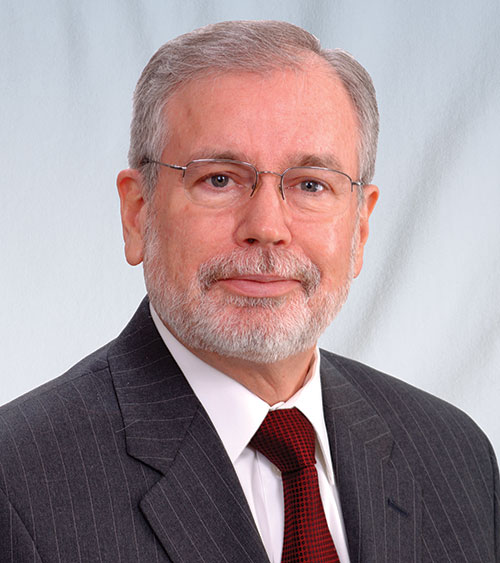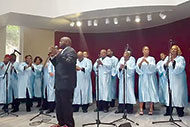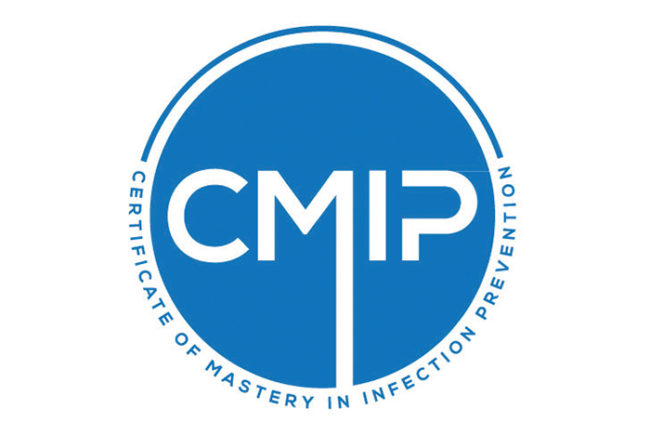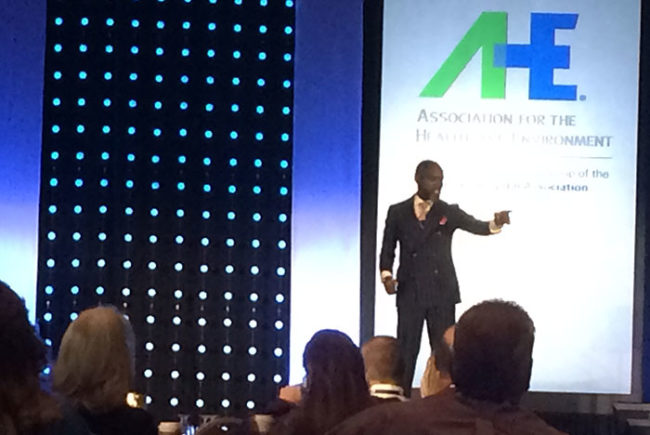HLAC President John Scherberger, FAHE, CHESP, REH, president of the Healthcare Laundry Accreditation Council (HLAC), discusses his organization's mission to improve safety for all who come in contact with hospital linens.
What is HLAC’s mission?
The mission of the Healthcare Laundry Accreditation Council (HLAC) is to inspect and accredit laundries that process health care textiles (HCTs) based on the highest standards for patient safety and infection prevention. We envision a world where it’s a given that every health care linen is processed by an HLAC-accredited laundry.
What does the HLAC accreditation process cover?
The accreditation process covers the entire laundry process end to end. It begins with a day-long inspection whereupon an independent inspector, trained on HLAC standards, ensures that a laundry has quality-control, quality-assurance and quality-monitoring processes in place to provide hygienically clean linen not just once, but every time. The inspection aligns with the specifics of our HLAC Accreditation Standards document, “Accreditation Standards for Processing Reusable Textiles for Use in Healthcare Facilities, 2016 Edition,” which is available at our website.
The inspector will submit his or her findings to HLAC, which will determine whether accreditation, remediation or reinspection is in order. Accreditation is good for three years, although HLAC can conduct unannounced inspections at any time during this period.
HLAC standards cover the complete textile processing cycle, from handling and transporting soiled health care textiles, to in-plant processing and delivery back to the customer. The standards also cover many basic considerations, such as facility layout, personnel training and customer service. Special attention has been directed to practices required by the Occupational Safety and Health Administration, including the Bloodborne Pathogen Exposure Control Standards. Part III of the [HLAC] Standards addresses the surgical pack assembly room and its activities. This section is based on the American National Standards Institute/Association for the Advancement of Medical Instrumentation reference regarding reusable surgical textiles processing.
How many laundry service providers are accredited today and how has this number grown over the years?
Since our founding in 2005 and with our first accredited laundry in 2006, hundreds of laundries have gone through the accreditation process. Currently, there are approximately 200 HLAC-accredited laundries. It’s worth mentioning that for some, the HLAC accreditation process can be an experience that is too demanding. But we believe it is a process that should be rigorous because it’s for the welfare of patients and laundry personnel.
How have the HLAC accreditation standards changed over the years?
Our standards are continually under review and are changed as we learn from experience, education and expertise, and incorporate new guidelines and regulations. For example, what was once a non-mandatory provision might evolve to become a mandatory requirement. Over the years, our standards have both expanded and contracted as we are continuously working to keep them relevant and focused both on the safety of the laundry workers and the end users who are typically patients but include health care staff. An example of expansion was the addition in 2011 of an entire section addressing the surgical pack assembly room and its activities. Each time there is a change of existing standards, they are distributed for public input and comment prior to being adopted.
What are some of the biggest challenges facing health care laundry operations today?
Arguably, one of the biggest challenges is the one posed by the “disposable mindset” among health care facility managers and other staff, particularly those who have influence over purchasing decisions; that is, the erroneous belief that disposable products are preferable to reusable health care textile (HCT) products. By reusable, I mean virtually everything that’s reusable: infection prevention wipers and mops, sheets, towels, bed pads, gowns, mammogram capes, surgical gowns and drapes, and the list goes on.
The challenge to the laundry of this mindset is obvious: Disposable health care products don’t require a laundering process, which can seem appealing to a hospital that is looking to reduce its costs. But even though disposables initially may seem less expensive, in a typical life cycle they can be just the opposite. This, despite the fact that the laundering of HCTs is one of the largest costs for a hospital. Disposables are costlier than reusables because of frequency of purchase, disposal as a biohazardous waste, the harm they cause the environment, and the many dangers their use can pose in the health care environment, including the spread of superbugs. Here’s another thing to keep in mind: One cannot control the quality of the disposable; on the other hand, the quality of HCTs is virtually assured when hospitals work in partnership with accredited laundries.
Education is the only way to reverse the disposable trend, and there are a number of trade organizations that have been doing a tremendous job of communicating the reusables advantage, including the American Reusable Textile Association and International Association for Healthcare Textile Management.
How has health provider consolidation affected health care laundry operations?
The effects of consolidation have been far-reaching and include the impact on health care laundry providers. Within a consolidation, it’s doubtful that your typical hospital administrator is aware of how laundry processing can affect patient outcomes and safety, let alone how laundry processing that is substandard can affect a hospital’s reputation and financial health. Instead, when it comes to laundry, what the administrator sees is one of the hospital’s biggest expenses; and he or she looks at the spreadsheets and demands more services for less cost. This puts smaller, yet high-quality, contractors at a disadvantage because they can’t meet the capacity or contract requirements being requested. Laundries constantly have to educate their health care customers on the necessity to provide quality control and monitoring processes while justifying the expenses to deliver hygienically safe and clean linen that could affect patient safety and outcomes.
Where does textile processing fit into the hospital’s overall responsibility to provide a clean and safe care environment from the operating room to the patient room?
HCTs are such a prevalent aspect of the hospital environment that they tend to be taken for granted and overlooked in safe care initiatives. But let’s look at the facts: HCTs literally touch every facet of patient care and body. On a typical day, the health care professional also is likely to come into contact with HCTs via scrubs, isolation gowns, surgical attire, infection prevention products and cubicle curtains to name a few. The laundering of HCTs is one of the largest health care costs for a hospital.
All this, yet “doing the laundry” is more likely seen as an expense when, as textile processing, it should be seen as an investment in high-quality patient outcomes. It is the hospital’s responsibility to provide all patients with a safe environment — this includes clean, safe textiles.
What advice can you give to health facilities professionals in charge of their laundry operations?
Most importantly, get to know your professional laundry team. They are professionals. Visit the laundry plant and, as your guide, take along our standards checklist, which is available on the HLAC website. In all likelihood, the health care professional will be duly impressed by the size, scope, complexity and dedication of his or her laundry partner. Having hygienically safe and clean HCTs available every day is no small accomplishment. Visit the laundry, inspect the laundry, observe what goes into taking contaminated HCTs through the process of making them safe for your patients, maybe you or your family.
Secondly, learn whether — and insist that — your contractor has HLAC accreditation. After all, your hospital is accredited, shouldn’t your laundry provider boast similar credentials?






